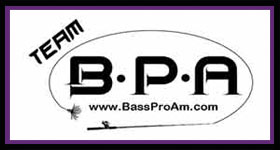Boat Docks for Bass
Boat Docks for Bass
(By: Tom Redington)
Boat docks are one of the most obvious forms of cover on any lake and they almost always hold bass. On lakes without much cover, they are often the #1 option for bass. Or if you’re on a new lake trying to put together a pattern, boat docks are a great starting point in your search.
As you might guess, not all docks are created equal. In general, the bigger the dock, the better it is. Big docks provide a lot of cover for prey, in addition to abundant shade for bass to launch ambushes. Docks with sunken brush piles around them are typically even better because they provide more cover for the smaller fish that bass eat. In a category by themselves are large marinas with dozens or even hundreds of boat slips. These large floating sanctuaries attract large numbers of fish and can be very productive year-round.
In addition to the type of dock, its location is important as well. Just like grass, rock, or wood cover, productive docks are situated in appropriate areas for the given season. For instance, docks on secondary points or in spawning flats are normally best in the spring, while docks on deeper main lake points or near channel swings are typically best in the summer and winter. My favorite boat docks, though, are ones off by themselves in a large area without any other cover. These isolated docks are the only cover option for the bass to use and will hold fish on a very regular basis.
The key to fishing docks is casting accuracy. Essentially, the further under docks you can place a lure and the closer you can keep it to the edges, the more fish you’ll catch. Squeeze a bait into an area where few other anglers can place it and you’ll likely be rewarded with a good bass. Good dock fishermen can pitch, skip, or roll cast a variety of baits into precise locations and they are able to make these casts both forehanded and backhanded. On lakes without much pressure, get your bait near a dock and you’ll catch some fish. On weekends or during tournaments though, all the easy ones get picked off and you’ll need to work the tight spots to catch them, especially the bigger bass. Finally, don’t forget the back or shore side of docks. Most anglers only fish the lake side of docks. It takes a little work to get behind the docks and fish under the catwalks and cables in the rear, but the extra effort is often rewarded with a big bass.
Once your casting is perfected, most fish can be caught on a few basic lures. When bass are feeding on shad around docks, spinnerbaits, chatterbaits, and shallow running crankbaits will catch them. For floating docks, let your bait run just below the level of the Styrofoam and bring them parallel to the dock structures, as close as possible. While hard baits catch fish around docks well, they are hard to skip into tight spaces or under low hanging structures. Therefore, I like swimbaits and swimming jigs around stationary docks because they skip well and still attract bass that are chasing shad. A 3.5” or 4.5” Live Magic Shad rigged on a weighted Ultimate Swimbait Hook casts and skips well because of it’s flat side, while the swimming action gives dock fish a new look. Or skip a 3/8 oz Mega Weight jig with a Fork Baby Creature trailer. For more action, use the entire bait, or clip off the grub tail of the Baby Creature for a more subtle action.
Often, bass relate to posts and brush piles around docks, so pitching soft plastics and jigs work better in this case. A Texas rigged Fork Flipper is hard to beat when I’m trying to get my bait to drop straight down around cover, especially when it is windy. Plus, the Flipper is flat enough to skip very well. If the bass are chasing bait and I’m trying to get a little more of a gliding and swimming retrieve from my Texas rig, I’ll put a Fork Baby Creature on my hook. In contrast, if I need to aggressively skip my lure way back into docks, I switch to a 3/8 oz Mega Weight jig with a Pig Claw trailer. The flat surface of the trailer and the weight of the jig allow me to skip it a mile. Furthermore, the jig will stay intact after vigorous skipping, while the hook on a Texas rig can become exposed and lead to snags with a lot of skipping. In those cases where more finesse is required, skipping tubes or Twitch Worms on 1/8 to 3/16 oz Screw-Ball jig heads work better. Rig the jighead on a spinning reel with 10 to 20 lb Spectrex braid with a 6’ leader of 10 lb P-Line Fluorocarbon and you’ll have a perfect combination of finesse and power.
Give these dock fishing tips a try and you might just catch a few more bass on your next trip. Here’s hoping you catch the lunker of your dreams.
If I can be of assistance, please contact me at 214-683-9572 (days) or 972-635-6027 (evenings) or e-mail me through my website, www.LakeForkGuideTrips.com.



